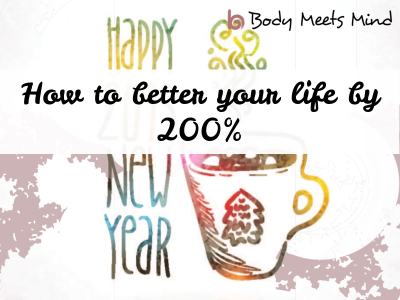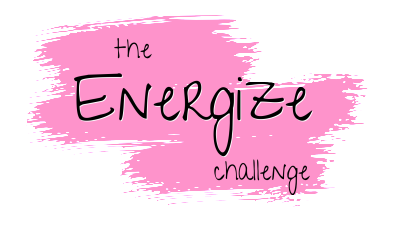First up, how do you define emotional eating?
Hands up if you think emotional eating is when you eat a big bag of chips, sweets, cookies, or even a head of lettuce (heck, it could be anything) – not because you were really hungry, but because you felt uneasy, uncomfortable, or anxious somewhere inside, and food provided some comfort or temporary stress-relief. But the consequence is you feel terrible/guilty/ashamed/embarrassed afterwards, and maybe you even beat yourself up about it.
If you’re nodding your head – you are spot on in agreement with the mainstream definition of emotional eating.
Yep, in the mainstream we see emotional eating as an undesirable habit.
We want to control curso de copy it or stop it, as if we can just get rid of our emotions or shove them out of sight. (hint: you can’t)
In this 2-parter I essentially want to re-wire your neural networks so that emotional eating works for you, not against you…
In 3 Simple Steps!
(How cool is that? No more beating yourself up and pouring gas on fire) In this post I’ll cover Step 1.
But first, a bit more context…
Like I said, the mainstream view of emotional eating is negative. It’s unwanted eating driven not by physical hunger, but rather by some hard-to-manage emotions. Maybe grief, anger, frustration, anxiety, apathy, sadness, loneliness, boredom… all those feelings we don’t know how to deal with very well. So in an effort to manage those difficult emotions we try to self-medicate with food. It generally works well, but later on we might beat ourselves up about it (“why did I do that again?”), and fear digestive upset, lethargy, or worse, weight gain.
What if I told you that this definition of emotional eating is bollocks?
Maybe it factually describes what is happening, but it is so charged with negativity and judgement that this “diagnosis” makes the individual feel embarrassed, ashamed, and even more judgemental of themselves.
Let me tell you something: whenever we feel bad or ashamed about ourselves, that is not “motivation” for long-term change. It can give you a temporary push to “better yourself” (whatever that means), but it will not heal the underlying wound, so the unwanted habit inevitably returns (perhaps with a vengeance).
In other words, seeing emotional eating like it’s a “bad” thing doesn’t help you get rid of it.
So what are we to do?
The opposite.
Instead of seeing our eating challenges as “wrong” and needing to fix them, why not focus on discovering the elements that makes us awesome? (they call this approach Positive Psychology) In other words…
Here’s what does work: seeing emotional eating as a good thing.
Emotional eating is not some dysfunctional terrible thing that you need to get rid of. No way. It’s a fantastic teacher who is here to help you, if you’re willing to listen to it.
So here is Step 1 in rewiring your thinking:
Step 1: Know that A-L-L eating is emotional (so just roll with it!)
Let me ask you: what’s the opposite of emotional eating?
Unemotional eating?
Imagine a meal with family and friends that is devoid of laughter, hearty chatter, and merry shenanigans. An emotionless meal devoid of happiness, joy, gratitude and celebration… Ugh, No thanks!
The truth is, every time we eat, we are eating with some kind of emotion.
Happiness, sadness, fulfilment, disappointment, excitement, boredom, joy, sorrow… We just only pay attention to the times when we’re experiencing the harder-to-manage emotions, usually the negative ones.
Your first neural re-wiring:
Emotional eating means eating while feeling any kind of emotion!
Accept that all eating is emotional. Yes it can be associated with negative emotions, but more often than not, eating is associated with positive emotions. So let’s see emotional eating for what it really is.
Instead of laser-focusing only on the times where you ate because you felt sad and lonely (and feeling ashamed or bad about it later), notice all the times you eat because you love food, celebration and how it lifts your mood or makes you feel fit and healthy. All those positive feelings are emotions too – don’t leave them out!
The more you notice the positive emotions associated with eating, the less the negative ones hog up the airtime. Gradually this also allows you to let go of judgement, inner negative banter, and just embrace the fullness of the eating experience.
Eating food and experiencing emotions is a natural union – Mama Nature designed us that way. So just roll with it!
If you felt sad and ate potato chips – what’s the big deal? Find me one other person who hasn’t ever done that (you can’t, can you…)! Emotionless eating would be lifeless eating. The truth is emotions enrich your life and provide nourishment in a way that nothing else can. So welcome your emotions to the table. All of them.
Don’t try to get rid of your emotions. Instead, just learn to relate with them in a way that works.
This is what I will cover in Steps 2 and 3… Stay tuned for more!
Many insights in this post come from the very kick-ass and knowledgeable people at the Institute for the Psychology of Eating. If you want to learn more about the Eating Psychology approach, watch these video series! This is a wonderful resource that is completely FREE 😀



Very insightful article! As a holistic psychotherapist and proponent of positive psychology you did a beautiful job of blending the emotions with the reality of food and eating as joyful and not punishing! I look forward to part 2. Thank you for your wisdom.
Thank you so much Veronica! Actually, it looks like I have a lot to learn from you! x
Phew, I’m glad someone finally said it. I feel better already after reading that.
High-five Susan!
Love this post Lulu. Explains emotional eating in a way that is so compassionate. And beautifully written, as always. Xx
Thank you Charlotte x
[…] If you haven’t read Part 1 go ahead and read that first. […]